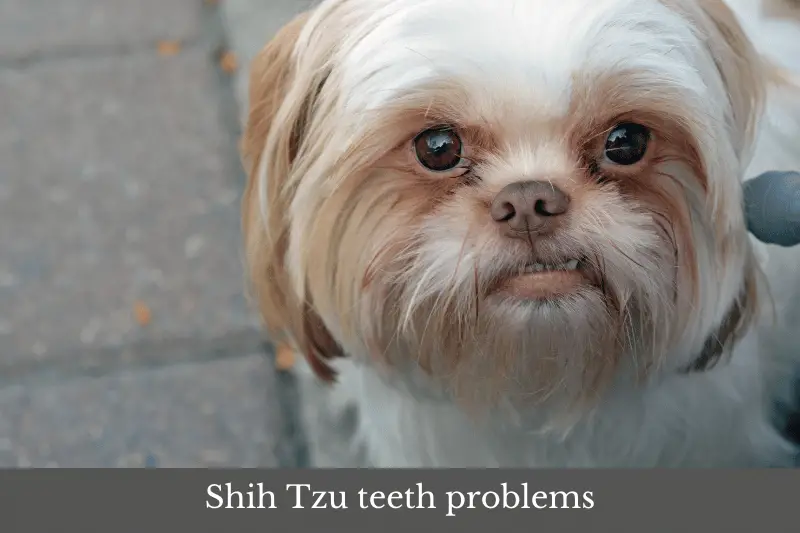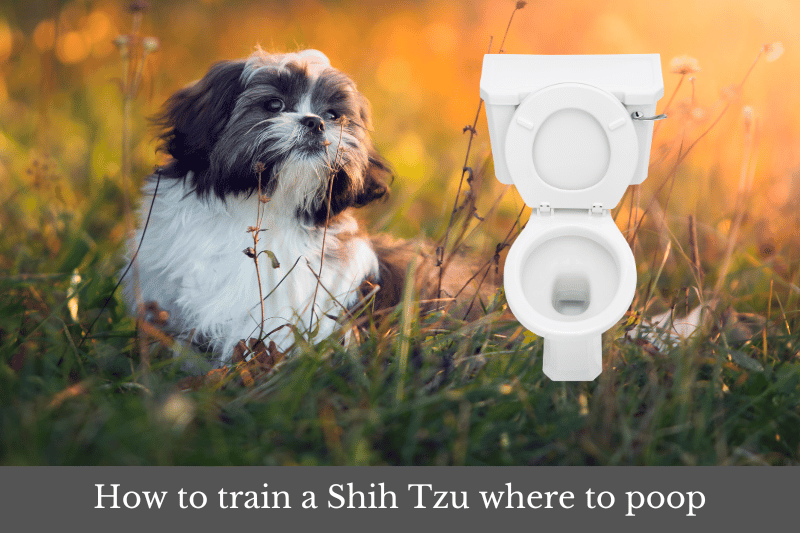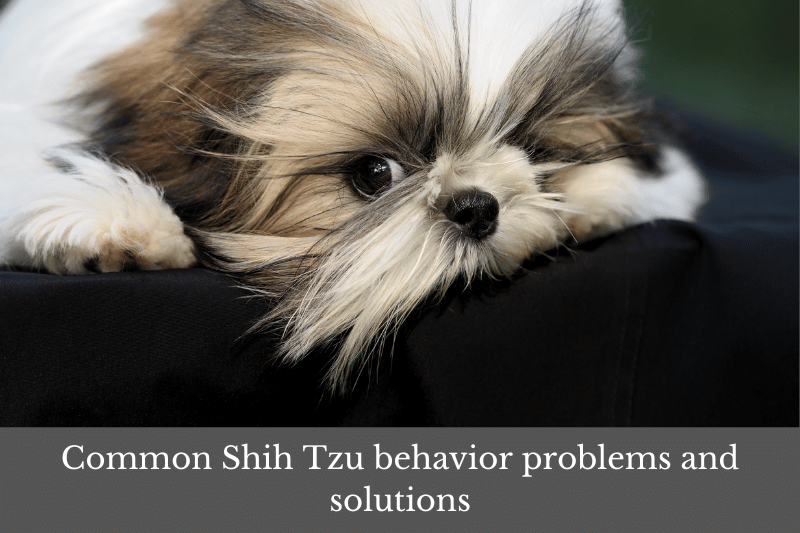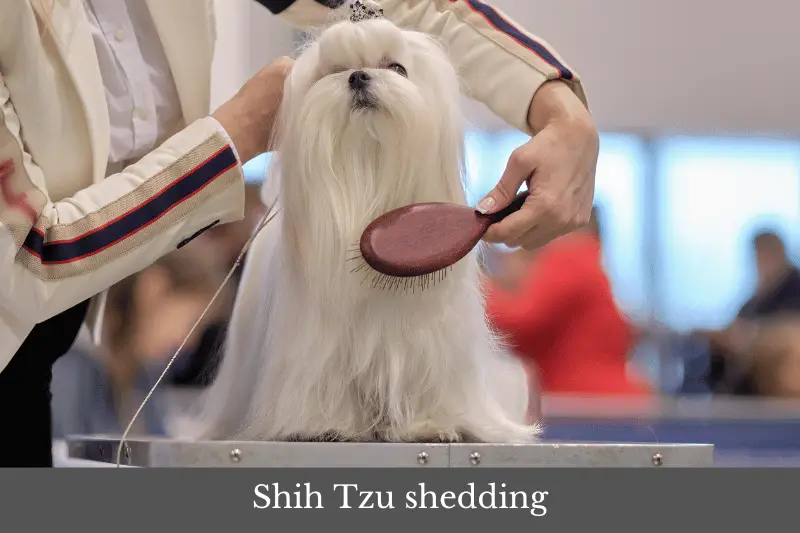Training a Shih Tzu requires patience, consistency, and positive reinforcement. Shih Tzus are intelligent and eager to please, but they can also be stubborn and independent, so training should be approached with a gentle and firm hand. In this article, we’ll discuss some basic training techniques to help you train your Shih Tzu.
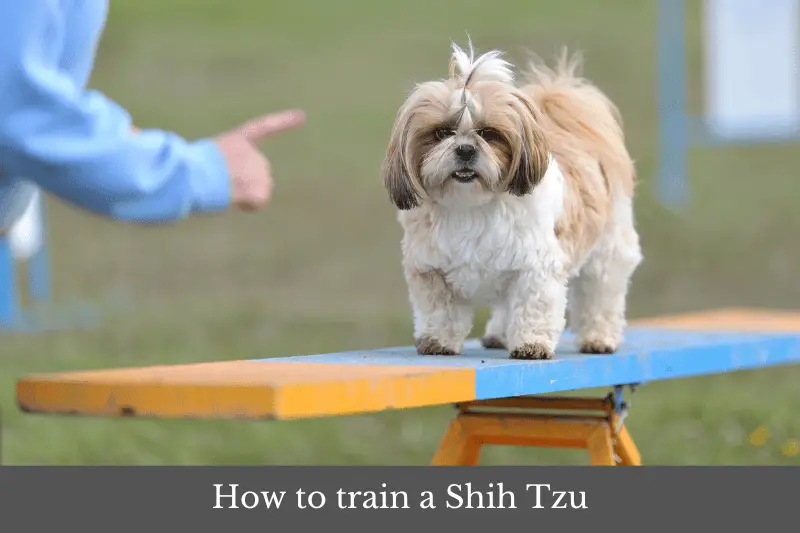
How to train a Shih Tzu
Potty training
Potty training is one of the most important aspects of training a Shih Tzu. To start, choose a designated potty area in your yard or balcony, or use pee pads indoors. Take your Shih Tzu to the designated area after meals, playtime, and naps, and use a consistent command such as “go potty” or “do your business.” When your Shih Tzu poops in the right spot, praise them enthusiastically and give them a treat.
Consistency is key in potty training, so make sure to take your Shih Tzu out frequently and avoid punishing them for accidents. Instead, redirect them to the designated potty area and reward them for pooping in the right spot. Over time, your Shih Tzu will learn to associate the designated potty area with pooping.
Crate training
Crate training can be a useful tool for training a Shih Tzu. Dogs are den animals and naturally avoid soiling their sleeping area, so keeping your Shih Tzu in a crate can help prevent accidents and provide them with a sense of security.
To start, choose a crate that is large enough for your Shih Tzu to stand up, turn around, and lie down comfortably. Place the crate in a quiet and cozy area of your home, and gradually introduce your Shih Tzu to the crate by placing treats and toys inside.
Once your Shih Tzu is comfortable with the crate, start using it for short periods of time when you can’t supervise them, such as when you’re out of the house or at night. Make sure to give your Shih Tzu plenty of opportunities to poop outside of the crate, and avoid using the crate as a punishment.
Basic commands
Training your Shih Tzu basic commands can help improve their behavior and strengthen your bond with them. Start with simple commands such as “sit,” “stay,” and “come,” and use positive reinforcement such as treats, praise, and petting to encourage your Shih Tzu to follow the commands.
To train your Shih Tzu to sit, hold a treat above their head and slowly move it towards their tail. As their head goes up, their rear will naturally go down into a seated position. When they sit, say “sit” and give them the treat. Repeat this several times until your Shih Tzu associates the command with the behavior.
To train your Shih Tzu to stay, have them sit and say “stay” while holding your hand up in a stop signal. Take a step back and immediately return to your Shih Tzu, saying “good stay” and giving them a treat. Gradually increase the distance and duration of the stay command.
To train your Shih Tzu to come, start by saying “come” in a happy and enthusiastic tone while crouching down and holding out a treat or toy. When your Shih Tzu comes to you, say “good come” and give them the treat or toy. Gradually increase the distance and distractions.
Leash training
Leash training is important for keeping your Shih Tzu safe and well-behaved while out on walks. Start by introducing your Shih Tzu to the leash and collar in a calm and positive environment, and reward them with treats and praise for wearing the leash and collar.
Next, practice walking on the leash in a quiet and familiar area, such as your backyard, and gradually increase the distance and distractions. Use a consistent command such as “heel” or “let’s go” to encourage your Shih Tzu to walk calmly and beside you. If your Shih Tzu pulls or tries to run, stop walking and wait for them to calm down before continuing.
It’s important to use a comfortable and properly fitting leash and collar or harness for your Shih Tzu. Avoid using retractable leashes or collars that can cause choking or injury.
Socialization
Socialization is essential for training a Shih Tzu to be well-behaved and confident around other dogs, people, and environments. Start socializing your Shih Tzu early by exposing them to different sights, sounds, and smells in a positive and controlled way.
Take your Shih Tzu to puppy classes or dog parks to interact with other dogs, and introduce them to new people and environments gradually. Use positive reinforcement such as treats and praise to reward good behavior and build confidence.
Addressing problem behaviors
Shih Tzus can exhibit problem behaviors such as barking, digging, chewing, and jumping. To address these behaviors, it’s important to identify the root cause and address it with positive reinforcement and redirection.
For example, if your Shih Tzu barks excessively, identify the trigger and try to remove it if possible. Use positive reinforcement such as treats and praise to reward your Shih Tzu for quiet behavior, and redirect their attention to a toy or activity.
If your Shih Tzu chews on inappropriate objects, provide them with plenty of appropriate chew toys and discourage them from chewing on furniture or other objects by using positive reinforcement and redirection.
Patience and consistency
Training a Shih Tzu takes time, patience, and consistency. Avoid punishing or scolding your Shih Tzu for mistakes or accidents, and instead focus on positive reinforcement and redirection. Set realistic goals and reward your Shih Tzu for progress and good behavior.
Consistency is key in training, so make sure to use the same commands, rewards, and routines every time. Avoid confusing your Shih Tzu by using different commands or expectations.
Summary
In conclusion, training a Shih Tzu requires patience, consistency, and positive reinforcement. Potty training, crate training, basic commands, leash training, socialization, and addressing problem behaviors are all important aspects of training a Shih Tzu. Remember to be patient, consistent, and positive, and enjoy the process of building a strong bond with your furry companion.









